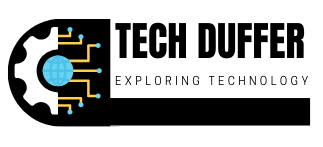In today’s fast-paced digital landscape, the need for effective parental guidance has never been more critical. As children increasingly interact with online platforms, parents are constantly seeking ways to protect, educate, and guide them in this ever-expanding virtual world. Enter “M0therearf”—a concept that focuses on the unique role mothers (and parents in general) play in shaping a safe digital environment for their children. While “M0therearf” may seem like a term tied to technology, it has grown to encompass a wide range of parenting techniques and tools aimed at enhancing a child’s online experience.
This article delves into what M0therearf represents, how it can serve as a model for effective parenting in the digital age, and practical strategies that parents can adopt to safeguard and nurture their child’s online growth. We’ll explore the current landscape, the importance of online safety, the role of positive guidance, and emerging trends in parental monitoring tools.
What is M0therearf?
M0therearf refers to a blend of “mother” (or primary parental influence) and “earf,” symbolizing the broader environment. Together, it suggests a holistic approach to parenting that combines nurturing with vigilance, particularly in the digital sphere. At its core, M0therearf focuses on:
- Creating a safe online environment: Setting up virtual boundaries to protect children from inappropriate content and interactions.
- Educational support: Guiding children to use digital tools constructively.
- Encouraging critical thinking: Helping children develop digital literacy to understand the implications of their online activities.
- Setting an example: Modeling positive digital behavior to promote healthy internet habits.
By integrating these principles, M0therearf becomes more than just a set of rules; it’s an approach to raising digitally aware and responsible individuals.
The Digital Landscape and Today’s Parental Challenges
The digital world is now a fundamental part of children’s lives, from social media and educational resources to video games and instant messaging apps. While these platforms offer tremendous learning and socialization opportunities, they also expose young users to risks, such as cyberbullying, misinformation, and privacy concerns.
Key Statistics on Children’s Online Activity
- Increased Screen Time: Studies reveal that children aged 8 to 12 spend approximately 4 to 6 hours a day on screens, with teenagers averaging up to 9 hours.
- Rising Social Media Use: By the age of 12, most children have a social media account, despite age restrictions on many platforms.
- Exposure to Inappropriate Content: Over 40% of children have encountered unsuitable content online, ranging from violent imagery to explicit content.
These statistics highlight the necessity for M0therearf-based approaches, where parental involvement and guidance are prioritized to help children navigate the online world safely.
Key Principles of M0therearf for Digital Parenting
To effectively embrace M0therearf, parents should focus on four core principles: protection, education, engagement, and empowerment.
1. Protection: Setting Boundaries for Online Safety
One of the primary responsibilities under M0therearf is to establish boundaries that shield children from potential harm. This includes setting up parental controls, monitoring online activities, and discussing the risks of sharing personal information.
Practical Tips for Protection:
- Utilize parental control tools: Most devices and platforms offer parental control settings to limit screen time, restrict access to certain sites, and monitor usage.
- Teach children about privacy: Explain the importance of not sharing personal information online, including location, school details, or photos.
- Create a safe environment: Encourage children to come to you if they encounter anything uncomfortable or concerning online, creating an open and trust-based relationship.
2. Education: Teaching Digital Literacy
M0therearf encourages parents to educate their children about the digital world and foster a sense of critical thinking. Digital literacy is crucial in helping children recognize fake news, advertisements, and potentially harmful interactions.
Practical Tips for Education:
- Discuss online content critically: Teach children to question the information they see online and verify it from reliable sources.
- Introduce the concept of digital footprints: Explain how actions online can have lasting effects and encourage responsible behavior.
- Encourage positive use of technology: Show children educational apps, games, and websites that can support their learning and hobbies.
3. Engagement: Staying Actively Involved
In the M0therearf approach, engagement involves being an active part of your child’s digital life. Rather than restricting access completely, parents are encouraged to explore the digital world alongside their children, allowing for mutual learning and stronger bonds.
Practical Tips for Engagement:
- Co-view content: Watch videos, play games, or explore apps together to understand what your child is interested in and what they’re exposed to.
- Discuss online friends: Talk about the people your child interacts with online and encourage transparency about these friendships.
- Promote family tech activities: Schedule tech-friendly family activities that are both educational and fun, like virtual museum tours or online coding workshops.
4. Empowerment: Building Confidence and Independence
The ultimate goal of M0therearf is to empower children to make safe, informed choices. Teaching them how to recognize and avoid potential dangers enables them to build confidence and independence as they grow.
Practical Tips for Empowerment:
- Encourage responsible decision-making: Give children the freedom to make small choices online while guiding them to understand the consequences.
- Model positive behavior: Children learn by example. Demonstrate how to interact positively online, avoid excessive screen time, and maintain digital etiquette.
- Reward safe behavior: Recognize and reward safe digital practices to reinforce positive online habits.
Tools and Resources for Practicing M0therearf in the Digital World
Numerous tools are available to support the M0therearf approach, from parental control software to educational apps that teach digital literacy. Here’s a look at some of the top tools for digital parenting:
1. Parental Control Apps
Parental control apps like Qustodio, Bark, and Net Nanny allow parents to monitor and restrict content, manage screen time, and track their child’s online activity. These tools offer customizable settings to cater to different ages and maturity levels.
2. Educational Platforms for Digital Literacy
Platforms like Common Sense Media and Be Internet Awesome provide resources and games designed to teach children about online safety, digital citizenship, and the importance of privacy.
3. Screen Time Management Tools
Apps like Apple Screen Time and Google Family Link help parents set screen time limits, schedule device-free times, and monitor app usage. These tools also offer insights into how much time children spend on specific activities, making it easier to identify areas of concern.
4. Virtual Safe Spaces and Child-Friendly Browsers
Some browsers, like Kiddle and KidRex, are designed specifically for children, filtering out inappropriate content and providing a safe online environment. These tools empower children to explore the internet safely without constant supervision.
Emerging Trends in Digital Parenting and the Future of M0therearf
The concept of M0therearf is likely to evolve alongside technological advancements, with new tools and trends emerging to support modern parenting. Here are a few trends to watch:
1. Artificial Intelligence (AI) in Parental Control
AI-powered parental control tools are on the rise, offering real-time analysis of content and more personalized monitoring options. For example, AI can detect explicit content or cyberbullying in messages and alert parents accordingly.
2. Increased Focus on Digital Well-Being
In addition to safety, there’s a growing emphasis on digital well-being, which encourages a balanced approach to screen time. Tech companies are developing features that promote healthy usage habits, such as reminders to take breaks or limiting usage during certain times of the day.
3. Enhanced Privacy Controls
With privacy concerns becoming a priority, platforms are now offering more robust privacy settings for children. Social media sites like Instagram and TikTok have introduced options for private accounts for younger users, limiting interactions with strangers.
How to Implement M0therearf in Your Home
Implementing M0therearf may seem daunting, but small, consistent actions can make a big difference. Here are a few tips to help you create a M0therearf-friendly home environment:
- Set clear rules and expectations: Establish rules for device usage, screen time, and online behavior. Be clear about the reasons for these rules and the consequences of not following them.
- Be consistent: Consistency is key in ensuring that your children understand and follow the guidelines you’ve set.
- Encourage open communication: Foster a trusting relationship where your children feel comfortable discussing their online experiences, challenges, or concerns.
- Stay informed: The digital world is constantly evolving. Keep yourself updated on the latest trends, tools, and safety features to ensure that you’re always prepared.
Conclusion: Embracing M0therearf in a Digital World
M0therearf represents a thoughtful, balanced approach to digital parenting that combines protection, education, engagement, and empowerment. By adopting these principles, parents can help their children develop the skills needed to navigate the online world safely and responsibly.
In the end, M0therearf isn’t about imposing restrictions; it’s about guiding children to make smart choices and fostering a supportive environment for their digital growth. As technology continues to shape our lives, the importance of M0therearf will only grow, providing a valuable framework for parents seeking to raise digitally aware and resilient children.

